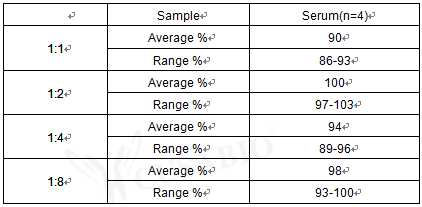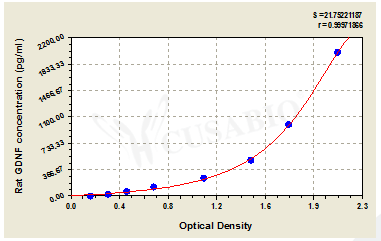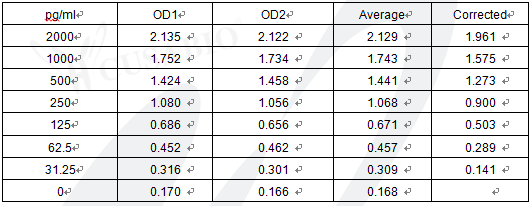The rat GDNF ELISA Kit is engineered for accurate measurement of rat GDNF levels from samples including serum, plasma, or cell culture supernates. It uses the Sandwich-ELISA mechanism in combination with the enzyme-substrate chromogenic reaction to measure the GDNF content in the sample. The color intensity is positively correlated with GDNF content in the sample. The GDNF concentration can be calculated according to the standard curve. This kit is tested with high sensitivity, strong specificity, good linearity, high precision and recovery, as well as lot-to-lot consistency.
GDNF promotes survival and affects the proliferation, migration, and differentiation of a number of neuronal populations within the central and peripheral nervous systems. It plays a critical role in neuronal differentiation and survival. GDNF is also a very potent trophic factor for spinal motoneurons and central noradrenergic neurons. It most affects enteric, sympathetic, and dopamine neurons. GDNF binds to a lipid raft-resident GPI–anchored GFRα1 receptor and recruits and activates two RET, triggering the MAPK, PI3K-Akt, and Erk pathways that contribute to promoting cell survival. GDNF-GFRα1-RET signaling also is important for renal development and modulation of spermatogonia differentiation.









